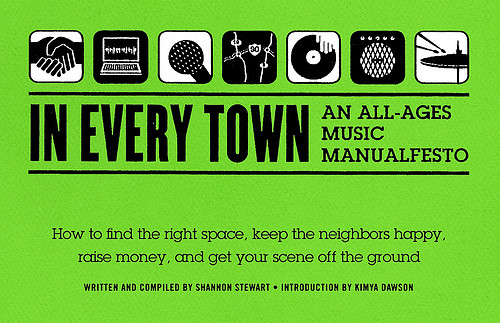Ground up (guerrilla) art #2: community halls and music (among other things)
 (Image: BloomBars, on 11th Street NW in Columbia Heights, DC, from the Washington Post.)
(Image: BloomBars, on 11th Street NW in Columbia Heights, DC, from the Washington Post.)A grad student has "conscientized" me about planning for the inclusion of spaces for connection and organization that aren't necessarily organized for "consumption" and consumerism and buying stuff. These spaces range from Tahrir Square in Cairo, where the Egyptian people organized, staged, and successfully brought down their disconnected and corrupt government, to a church meeting hall where local youths organize concerts. In DC two of these types of spaces are Electric Maid in Takoma Park and BloomBars in Columbia Heights (also see "D.C.'s BloomBars: An offbeat space where art and community combine" from the Washington Post)." In Brooklyn, there is this incredibly interesting project called 3rd Ward which is a space for all kinds of interesting activities.
In strong real estate markets it's very difficult to maintain these kinds of spaces because of the constant upward pressure on costs and demand, which crowds out these kinds of initiatives in favor of uses, usually for profit, that pay higher rents.
But it is these kinds of spaces that Jane Jacobs was thinking about when she wrote Death and Life of Great American Cities, and listed four key attributes of healthy cities, one being that four) that to be successful, cities require "a large stock of old buildings" which have been paid off and therefore have low running costs and low rents, and can be used to foster new ideas and innovative projects. (E.g., the 3rd Ward outfit calls itself "an incubator for innovation.")
I've written and spoken about this in the past in terms of "the arts" (e.g., "Arts, Culture Districts, and Revitalization") but I think we need to also plan for purposively and support financially these kinds of spaces in order to foster creativity and community outside of the profit imperative.

The Economic Function, Billboard text at the corner of Corporation Street & Alma Street, Sheffield S3. 6 April - 20 April 2004. The work by Hewitt & Jordan, 'The economic function of public art is to increase the value of private property' sets out to question the function of art in the public realm within the economic regeneration of post industrial cities.
Since by default the real estate developers are the creators of the world we inhabit, if we don't plan for these kinds of spaces, and provide funding streams for their maintenance, we'll never get them.
Anyway, I came across a book, In Every Town: An All Ages Music Manualfesto, which is an assistance manual for community music spaces. It looks like a pretty interesting resource.

Labels: arts-culture, commodification of the public space, music-entertainment, participatory democracy and empowered participation, public art, public space management



0 Comments:
Post a Comment
<< Home